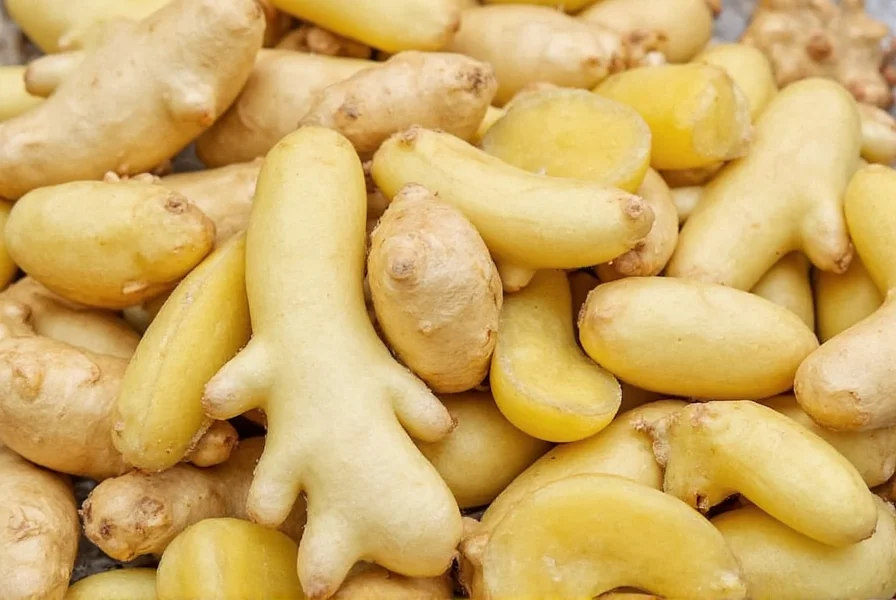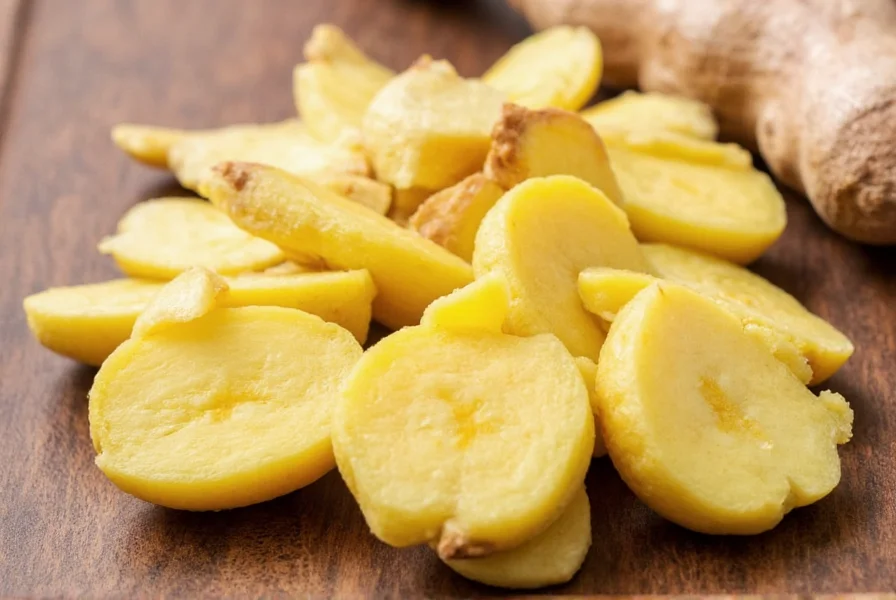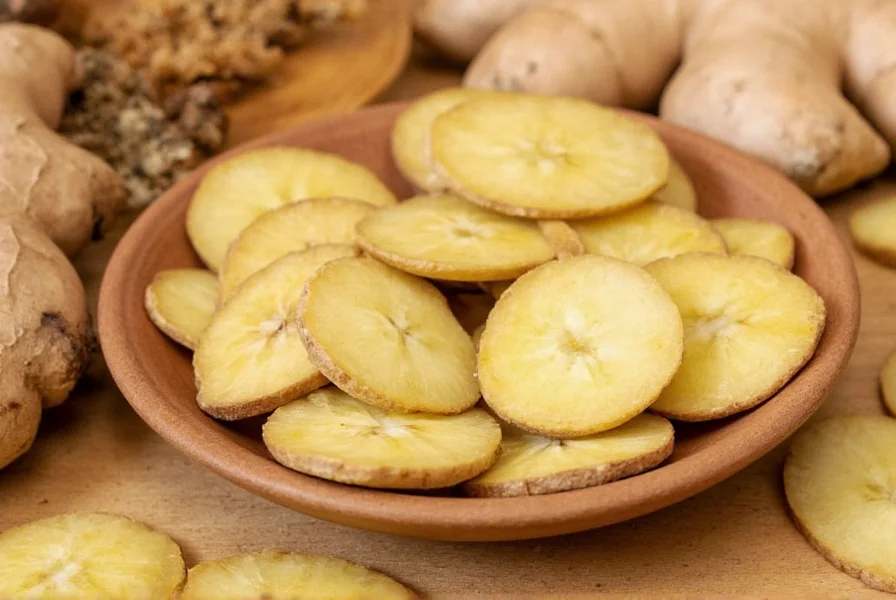When exploring what is thai ginger and its culinary significance, it's crucial to understand how this ingredient shapes authentic Thai flavors. While often confused with regular ginger, Thai ginger (properly called galangal) belongs to a different botanical family and delivers a distinctive taste profile that's fundamental to many traditional dishes.
Identifying Thai Ginger: Physical Characteristics
Thai ginger, or greater galangal, features a smoother, harder skin than common ginger, with a cylindrical shape and light brown exterior. When cut open, its interior reveals a pale pink to salmon hue rather than the yellow of regular ginger. The texture is notably more fibrous and less juicy, requiring different preparation techniques for optimal flavor extraction.
| Characteristic | Thai Ginger (Galangal) | Regular Ginger |
|---|---|---|
| Botanical Name | Alpinia galanga | Zingiber officinale |
| Flavor Profile | Sharp, citrusy, pine-like, medicinal | Spicy, warm, peppery |
| Interior Color | Pale pink to salmon | Bright yellow |
| Texture | Firmer, more fibrous | Softer, juicier |
| Culinary Use | Essential in Thai curries, tom kha gai | Versatile in Asian and global cuisines |
Culinary Applications of Thai Ginger
Understanding how to use thai ginger in cooking reveals why it's indispensable in authentic Thai cuisine. Chefs typically slice or bruise fresh galangal rather than mince it, as its fibrous nature makes fine chopping difficult. In traditional preparations like tom kha gai (coconut soup), whole slices infuse the broth with complex flavors that mellow during cooking while maintaining their distinctive character.
Unlike regular ginger which benefits from longer cooking to mellow its heat, Thai ginger's flavor compounds are more delicate. Prolonged cooking can diminish its unique citrus-pine notes, so many Thai chefs add it later in the cooking process. This knowledge of thai ginger flavor profile timing separates authentic preparations from imitations.

Finding and Substituting Thai Ginger
For those searching where to buy thai ginger, specialty Asian markets typically carry fresh galangal in the refrigerated produce section. When unavailable, frozen galangal offers better flavor retention than dried alternatives. While no perfect substitute exists, a combination of regular ginger with a touch of lemon zest and a pinch of black pepper can approximate certain aspects of its flavor profile.
Many home cooks wonder about substitute for thai ginger in recipes. The closest alternative is lesser galangal (krachai), but this has a distinctly different flavor. In emergencies, a 50-50 mix of regular ginger and fresh lemongrass can provide some similar citrus notes, though the pine-like complexity remains unmatched. For authentic results, seeking genuine Thai ginger proves worthwhile for serious Thai cooking enthusiasts.
Storage and Preparation Techniques
Proper storage significantly extends the shelf life of this valuable ingredient. Wrap fresh Thai ginger in paper towels, place in an airtight container, and refrigerate for up to three weeks. For longer preservation, freeze whole or sliced pieces in freezer bags for up to six months without significant flavor degradation.
When preparing Thai ginger, use a spoon to peel rather than a knife, as its thin skin comes off more easily with minimal waste. For soups and curries, bruising the rhizome with the back of a knife releases more flavor than chopping. In paste preparations, remove the fibrous core before grinding to achieve smoother textures.

Traditional Uses Beyond the Kitchen
Thai ginger's significance extends beyond culinary applications into traditional medicine systems across Southeast Asia. While not a substitute for medical treatment, various cultures have incorporated it into wellness practices for centuries. Its distinctive chemical composition differs significantly from regular ginger, containing unique compounds like galangin that contribute to its characteristic properties.
Understanding the historical context of thai ginger benefits reveals why it remains culturally significant. Traditional preparations often involve combining galangal with other herbs to create balanced formulations, reflecting sophisticated knowledge of botanical interactions developed over generations.
Common Misconceptions Clarified
Many confuse Thai ginger with regular ginger due to similar appearances, but they're botanically distinct plants with different flavor compounds. Another misconception suggests frozen Thai ginger loses all flavor, when in reality proper freezing preserves most volatile compounds. Some believe dried galangal powder works equally well in all recipes, though fresh remains superior for most traditional preparations requiring its distinctive aromatic qualities.
Conclusion
Mastering the use of Thai ginger elevates authentic Southeast Asian cooking beyond superficial imitation. Its distinctive flavor profile—sharp, citrusy, with pine notes—remains irreplaceable in traditional preparations like tom kha gai and certain curry pastes. While finding fresh galangal requires some effort outside Thailand, the investment pays dividends in achieving genuine flavors that define Thailand's culinary heritage. Understanding its proper preparation, storage, and culinary applications transforms good dishes into authentic experiences that honor the complexity of Thai cuisine.











 浙公网安备
33010002000092号
浙公网安备
33010002000092号 浙B2-20120091-4
浙B2-20120091-4